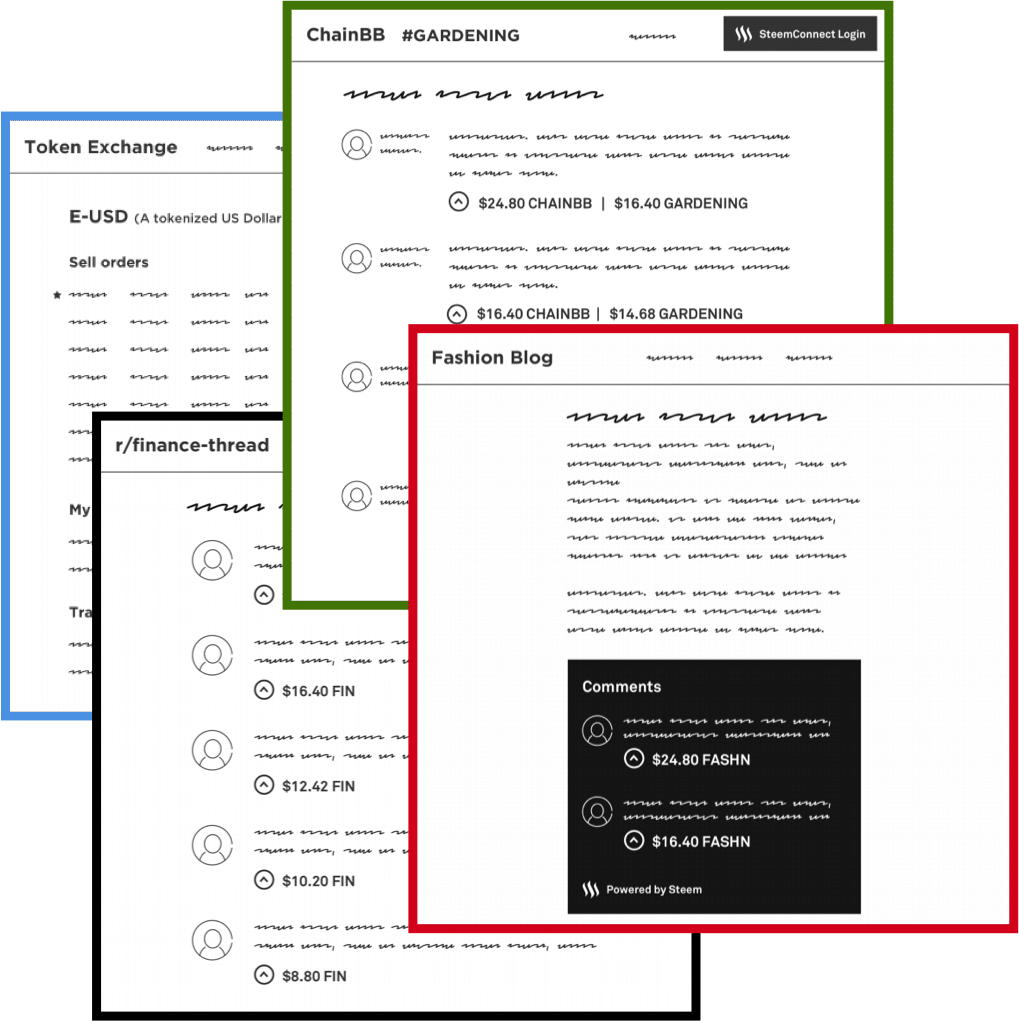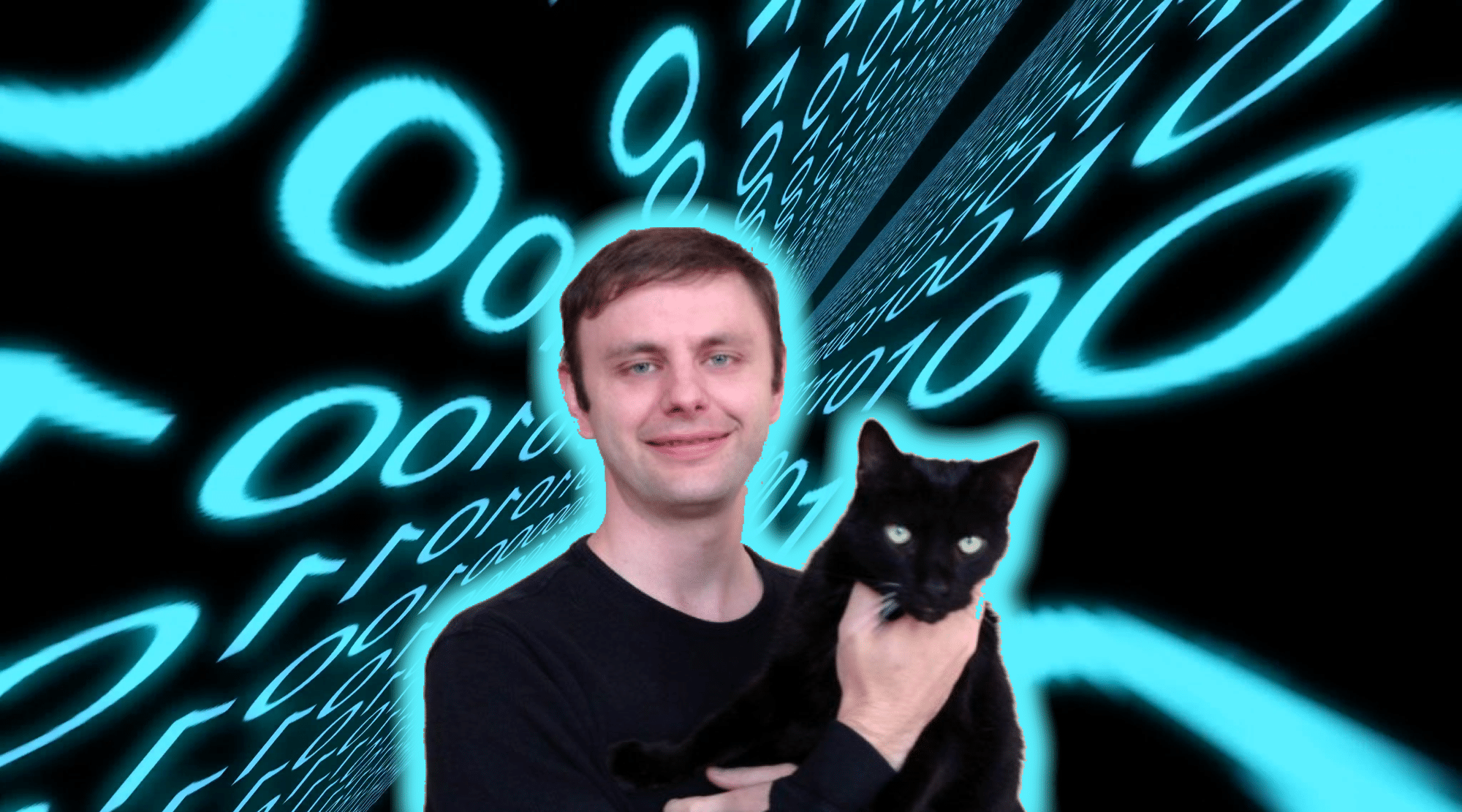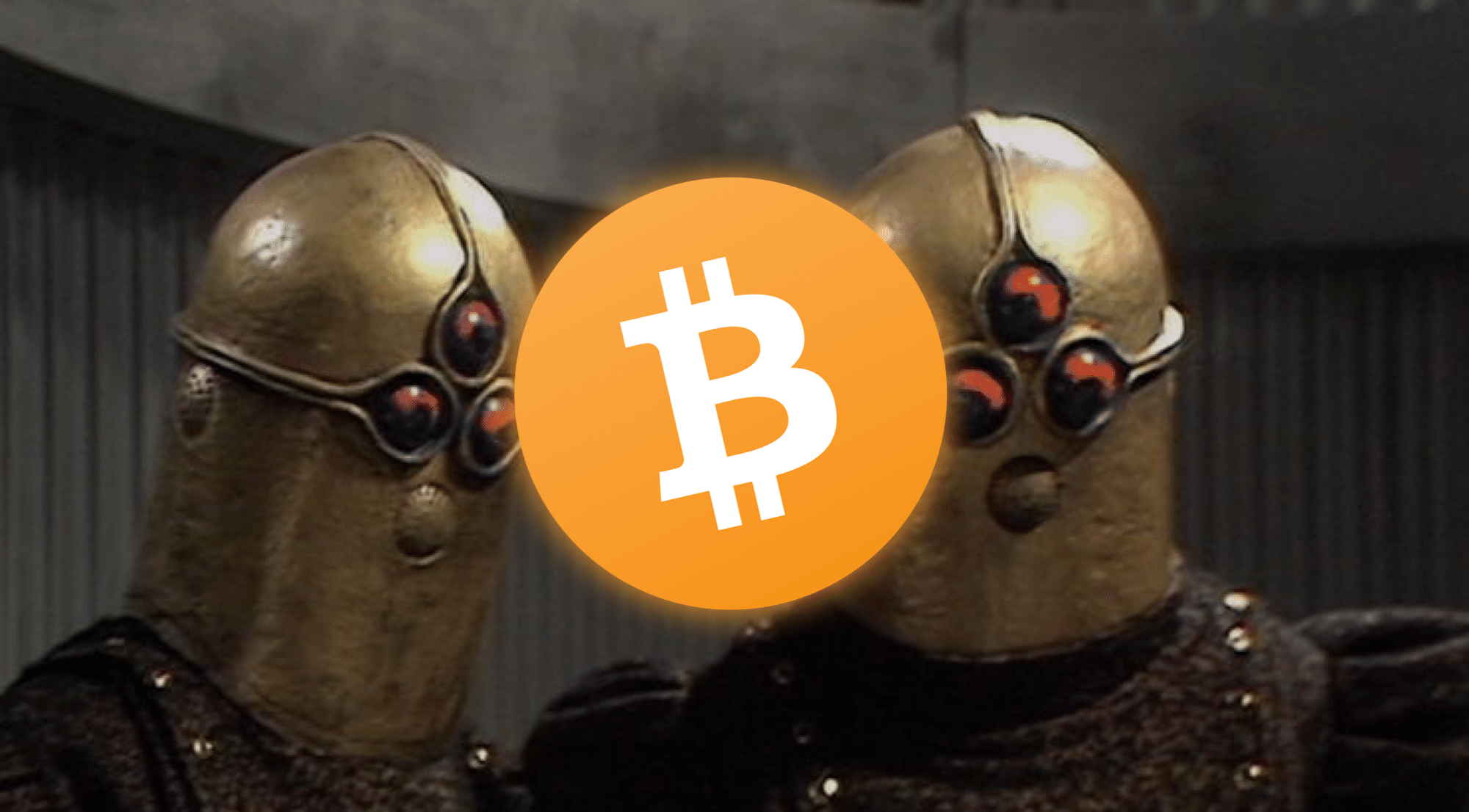This is Part 3 in a 3 Part Series on Steem and the Blockchain World, a conversation with Steemit Content Director Andrew Levine. Check out Part 1 and Part 2 if you’re just joining us.
In this final part, we’ll touch on why Steem was an early success and why Andy is confident in the future of the platform.
We start mid-conversation with this killer line from yours truly:
James: [Humans are] only good at one thing, which is figuring shit out.
Andy: Yes. And I think that is one of the real strengths of the Steem team, is that we have been in the shit. That is where stuff gets made. That is where the real stuff gets made. And so many other people in this space are going, “This is what we are going to do and this is how we are going to do it.” Yeah we’ll see about that.
Like Mike Tyson famously said, “Everyone has a plan until they get punched in the mouth.”
It often comes down to, “We are going to store some information on Ethereum for some reason that is usually stupid, and then based on that information, we are going to create a token and then that token is going to go to the most important parties in there.”
I’m reframing it to make sense in our context, but at its core that is what they are doing. “You are going to make predictions. We are going to store those predictions on Ethereum, and then we are going to create a token that is going to be distributed to all the people who are participating in this game in such a way as to ensure constant growth.”
Because if it’s not growing, no one is interested. Nobody is going to go on a gambling platform that is stuck at ten users. So, that is what they are trying to do and yet nobody has been forced to figure out what we have had to figure out because we made one very simple decision very early on, which was to create a real application. That is really what it all comes down to.
I wasn’t there, but I think what happened was that they said, “This blockchain database has massive potential. We have implemented DPoS on BitShares, we know that it works to an acceptable degree, and now in retrospect, we know that it works great. BitShares is still going great. I mean, I don’t use it but it’s there, it’s not broken.
“What else can we use this to do?” We all are very big advocates of blockchain adoption and cryptocurrency adoption. “Why don’t you get something in people’s hands?” And I bet they thought that a million apps were right around the corner. I bet they were like it’s only a matter of time. Meanwhile, two years have gone by, but that decision was huge because it forced them to answer those questions.
Once you make that decision to build an app that people actually use you’re forced to solve the most important problems. If you want to incentivize users using cryptocurrency, how do you do that without becoming a money transmitter or an employer? How do you do it without it being gameable? View counts? That’s gameable. Account-based voting? Gameable. And that is where Proof of Brain came out of. And Proof of Brain is a revolution in capitalism. It truly decentralizes central banks among the people because it is the people who use Steem who determine where 100% of the money goes. Think about that.
And it turns out people are actually pretty good at determining what they think is valuable because STEEM’s market cap is hundreds of millions of dollars. Really STEEM is the only token that truly delivers on the original promise of cryptocurrencies.
It has near-instant transfers, fee-less transactions, and no centralized authorities controlling the distribution. Once SMTs launch the genie will really be out of the bottle because anyone will be able to create their own version of that token at little to no cost.
And all these other apps in the space, they are not operating. So, you can think you are going to do anything at that point. We’ve adapted over time. Things have certainly changed, but it is more of like a grooming process.
You get rid of stuff that didn’t work, you keep stuff that works, and you enhance the capabilities of other things. And DPoS has now proven itself to enable rapid iteration compared to other blockchains.
Steem has had 19 hardforks in 2 years none of which led to the creation of sister-chains. The blockchain just keeps getting better and better and the community just keeps growing and growing. It’s actually doubling about every 6 months.
Yeah. The market is an idea machine. The good ones last, and the bad ones get flushed out, and you see what works, and things build up.
Yes. One of the things that brought me into the project as a user was — I think what we’re so good at is we’re good at picking the simplest, stupid things that have such massive impact, starting with the social network. You have countless people telling you exactly what they want from you.
We know what people want from STEEM. We know where they want it to go. We know SMTs are a great idea because everybody agrees. They write about it! Everybody on the platform wants it, every stakeholder wants it. Even the people who criticize us every day, they criticize us now about SMTs not being launched!
There’s a lot of people trying to solve hard problems, but there’s a lot of easy problems that you could solve instead. And those are the ones you want to go through. That’s how I see it. I call that the Musk approach.
The Boring Company was a great example. He laid out his approach to markets, where he identifies, okay, “What hasn’t been fixed in 40 years, or what’s clearly broken and sucks and could probably be fixed pretty easily?” Go to that.
The Boring Company obviously was drill technology. He was like, “Wow, we’re still using the same drills we used to drill the Chunnel.” No one’s innovated, and no one’s fixed this, and there is a glaring issue. Of course, that’s what we go after. Sort of the Blue Ocean strategy. I don’t know if you’re familiar with that term.
There’s the million dollar idea that everyone’s shooting after, and then over here, there’s this wide, open market for some simple, to the point improvement. The great quote related to this I’ve heard was. “It’s easy to be number one. Go find number one and be one better.”
You have great examples of super popular and widespread social media platforms. You have Reddit. You look at Reddit and you go, “Hmm, Reddit. Awesome. Lots of people use it. How can we improve by one?” And you add that incentive structure, that Steemit did, and look what happened. The rest is history.

Yeah, I think that is a really astute observation. I think most people don’t really seem to have a good grasp on how technological advancements actually work. A good example from Nassim Taleb, the biggest innovation of the last ten years was four wheels on a suitcase.
Yes, it’s not the visionary ideas.
It is the simple zero to one changes that developers, entrepreneurs then hack into their products and services to kind of infect them with that innovation. Like the car or the Model T. The real innovations behind the Model T weren’t — it wasn’t the first car. It wasn’t like engineers spent 30 years saying, “We’re going to build the perfect car.”
It was the assembly line, some lightweight steel from France or whatever, Dodge engines, and then uniformity. You could buy any color you wanted as long as it was black. The Model T is arguably responsible for trillions of dollars in wealth creation, all the technological innovations that came after it were built on it, were built on a world that was connected by automobiles.
And then the internet had a similar dynamic. Obviously, the internet was probably pretty complicated. But effectively, it just enables two computers to communicate. It’s a protocol that enables computers to talk to one another. That innovation, relative to the perceived innovation that came after —
Like when you look at Bitcoin, and you go, “Oh, this is a brilliant design” and all that stuff, that is only enabled by the simple implementations of TCP/IP. That fundamental innovation, people build on it. It’s really like adding your little thing. It’s much more of a cumulative effect than people think, or at least that’s the way it seems to me.
My only fear is that when we talk about simple solutions or promise simple solutions, that people think it is any less difficult than what other people in the space are doing. We could spend our time coming up with ever more complicated protocols that nobody uses. When we say simple, we may just be saying usable at this point. Simple is also scalable.
People don’t use stuff they don’t understand.
No, and I’ve been following this space forever. You go in and you read Tron’s whitepaper, and the parts that aren’t plagiarized from Steem or somewhere else is complexity porn. At some point, when you are delving into a system, you usually arrive at a relatively simple proposition somewhere like Bitcoin.
It’s peer to peer digital cash, uncensorable, decentralized transaction. Boom. Everything else is bonus.
There’s a ledger on everybody’s computer.
That’s it. It’s a shared ledger, everyone agrees, you don’t have to trust anyone, boom.
Here’s the complicated code we needed to come up with to enable that functionality. Whereas they are going, “Here is a complicated protocol that we think will solve some high level problem.” Usually scalability or something. I feel like it’d be unfair to private blockchains or something, people who are building private blockchains that are really dedicated to a specific use case, but they’re private. Who cares about those?
What I think is so special about SMTs is that they are a customizable, off-the-shelf incentivization schemes for a decentralized autonomous organization. You’re that application. You want to build Pinterest and you want to incentivize everybody in the system ideally.
So, every user is a shareholder?
Better. A stakeholder. Shares are a legal relationship backed by lawyers and courts. The entire point of stake is that your influence over the protocol is baked in at the protocol level, so you don’t need a bloated, expensive, corrupt legal apparatus involved. That’s the whole promise of decentralization. And you want to beat Pinterest like you said. You want to do one better than Pinterest. You’ve got to offer something special. And really, what you need to do is you need to figure out how to operate more efficiently than Pinterest. Cutting out middlemen is usually a good place to start.
What Pinterest did was, I’m sure there was some kind of magazine or something that did Pinterest before Pinterest. They probably took hundreds of more people to do it, and Pinterest probably started up with like ten people.
And so, what a DAC offers you is the ability to, like with Steemit. Steem has paid out around 40 million dollars to content creators all over the world. Do you know how many people it would take to do that? When you see other platforms being like, “We are going to distribute these rewards.” How many people? Steem does that entirely autonomously.
Now, the interesting part is that guilds and things do emerge where users themselves come together and form these subgroups. But you are not incentivizing that. Steem is. That is the result of that autonomous incentivization mechanism.
And whatever that leads to is fine, as long as it is designed to be sustainable and scalable. And so, we have built a content sharing platform that rivals many others, that is growing exponentially, that has a unique value proposition of paying its users.
And not only does it do that, but we do that with an order of magnitude fewer employees than a comparable organization would need because of Proof of Brain, because of the decentralized distribution method, because we are actually a part of a larger decentralized autonomous organization called Steem.
And so, what SMTs will offer you is the ability to launch your own decentralized autonomous organization. You give yourself a bunch at the beginning and now you are incentivized to make it more valuable over time even though you have no control over it.
That is actually the lion’s share of the work. And so with SMTs, you want to launch your Pinterest, right? But you don’t want to deal with the nightmare of figuring out how to incentivize all of these people.
So, you launch PinterestCoin and you give yourself a bunch. And now, your responsibility is marketing, building a rudimentary interface, and telling people, “We launched this coin. We don’t control it. The Steem blockchain produces it, but you can earn it through our platform. Here’s our platform. It’s not us giving out the money.”
People will want it because what they get is influence. We know that people want influence within the social networks that they use, within the content platforms that they use. That influence has value and that’s what these tokens tokenize in part. I would say that is the foundation of the token.
We’re moving into a reputation-heavy era.
It is. It’s more influence, and I think what will probably happen with Steem is that somebody will launch an SMT and use it as a reputation token. You can create an SMT and distribute it to everyone on Steem. But with Oracles, you can say, “I’m going to appoint five Oracles. The Oracles create a whitelist of accounts that are good, and the whitelists have to agree with one another.”
And so, only if five out of five Oracles agree that this person is good do they become entitled to earn these tokens. That is one way that you could implement a reputation token. The rest isn’t really scalable. I’ve seen suggestions of the other solutions, they don’t make sense.
And whether it is an actual reputation token, you still have a reputation as an identity from people who know you, which is probably closer to influence than reputation in a technical reputation token sense.
Yes, there is certainly a reputation element to it because of the fact that you are incentivized to disclose information about yourself. I have long believed that the game of Steem, on the most fundamental layer, is proving that you are just real. This is about proving that you are a real person.
If people don’t trust you, they are not going to care about information that you are sharing.
But also, what are you doing when you are sharing information? It gets into a rather philosophical level. But on a very simple level, when you’re talking to somebody, and when I am talking to you right now, what am I really trying to learn from you?
Yes, we can call it trust. Yes, I can say I’m trying to learn information from you. But really, I am trying to figure out if you are real, if you are just being real with me right now. “Are you an actual thing? Are you some illusion? Are you pretending something?” When we are talking about trust, we are talking about realness. We are talking about reputation. It all comes down to authenticity.
Anyway, on a technical level, it is influence because the more of an SMT you have, the more influence you will have over the rewards pool of that smart media token. On Steem, it’s the Steem rewards pool.
But whenever anybody launches an SMT, so long as they specify a token inflation rate, unless they want to do that thing where they just create a token and just give it all to themselves or to people that they like, if you specify an inflation rate, that will fill a rewards pool which will be distributed based on crowdsourced, stake-weighted upvote.
And so, that is how you get influence within the ecosystem, and then the app developer can choose to use that influence to affect how you display information on your site.
In the future, do you see DTube having its currency, Steemit having its currency, DLive having its currency, DSound having its currency? Or do you think that there is still room for SMTs to coexist with platforms that are simply Steem-powered?
I think there’s room for both, and I think there will be. It’s kind of surprising. It’s kind of a fascinating evolution that the ecosystem has taken, where a year ago, what we were trying to explain to people was why they should integrate with Steem. It’s an amazing protocol. You can do stuff like you mentioned.
It wasn’t until we started talking about SMTs that people really started to appreciate the value that the STEEM token could give to their applications. I think it has something to do with being able to visualize and really personalize this thing. Everybody wants their own money. This is ownership. It enables you to think about how you would own your application.

Paradoxically, that has now led to a situation where a number of people are going, “Why don’t we just build it with the STEEM token?” And we’re like, “We love that idea!” That’s where the rewards splitting feature comes in. And the other interesting element, I think, is that now, I’ve seen a couple of people who are looking at STEEM because they don’t want to run the risk of launching their own cryptocurrency.
I think while some people are still inevitably going to be afraid to get into cryptocurrency or blockchain, period, we are a really safe option for them because STEEM has been around forever, it’s really the only truly decentralized token, and it never ICOed. More and more people are starting to appreciate that. In truth, you are still using STEEM even with an SMT.
STEEM is going to be an existing decentralized distribution mechanism that developers can instantly tap into, but it’s also going to shift toward being the resource allocation token of the Steem blockchain. And so, you create an application, it leverages an SMT, you’ve got a certain amount of bandwidth.
Bandwidth is what makes Steem a freemium blockchain which is part of what makes Steem such a powerful protocol for application development: it enables developers to benefit from the network effects that come from offering free applications while also gaining the advantage of integrating a hyper-scalable blockchain and a real-time fee-less token.
So the moment you launch your SMT it won’t be costing you anything. Only once your application starts getting real traction and starts generating tons of transactions will you need more bandwidth at which point you will be faced with the decision to buy STEEM and power it up into Steem Power, investing in the protocol that is clearly adding a ton of value to your app, or use some other protocol.
But even that isn’t really a cost because you can always cash out. So SMTs will really be a risk-free, cost-free way to bootstrap your own token and STEEM will be the token that ensures that this increasingly valuable ecosystem remains economically sustainable and scalable.
The only real costs to developers are the opportunity costs that come from not integrating the protocol and that’s actually true of STEEM as it is today.
And so, the applications that have lots of success on STEEM will be forced to invest in the Steem blockchain by taking STEEM off the market. It’s not money that you give to us. It’s not money that goes away. It’s money that you are investing into this protocol that you’re getting a ton of value out of.
So through that mechanism, if an SMT is being used a lot, what’s really happening is that STEEM is getting used a lot. It’s this extra layer on top of STEEM that enables you to customize the distribution of the tokens based on your needs while ensuring that the base protocol is still as safe, scalable, and secure as possible.
Out of STEEM
Andy and I ended our (thorough) conversation here. I hope you enjoyed this look behind the scenes at Steem!
Never Miss Another Opportunity! Get hand selected news & info from our Crypto Experts so you can make educated, informed decisions that directly affect your crypto profits. Subscribe to CoinCentral free newsletter now.










